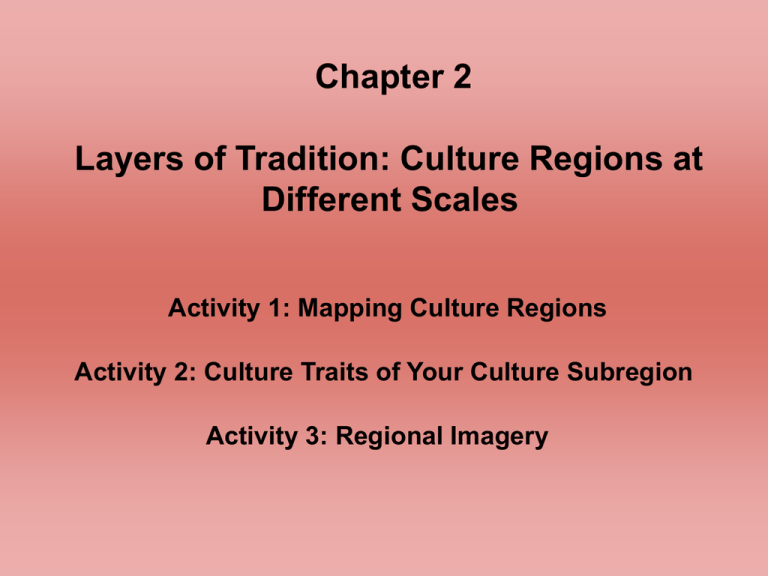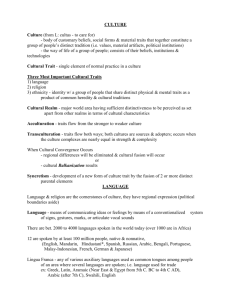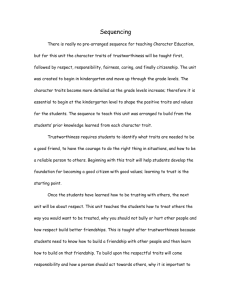Chapter 2 - CAS courses
advertisement

Chapter 2 Layers of Tradition: Culture Regions at Different Scales Activity 1: Mapping Culture Regions Activity 2: Culture Traits of Your Culture Subregion Activity 3: Regional Imagery Learning Outcomes After completing the chapter, you will be able to: Evaluate map layers using a geographic information system (GIS). Define the core of a culture region on the basis of three characteristics. Define the sphere of a culture region on the basis of the farthest extent of any cultural traits. Discuss the history and geography of the Middle East and/or American Southwest. Identify the cultural traits that make your subregion distinctive versus those that are shared with the entire North American culture region. Recognize symbolism as it is used to promote regional identity. Recognize that regional imagery often promotes one group’s identity while excluding that of others. Figure 2.1 Figure 2.2 Figure 2.3 Figure 2.4 Figure 2.5 Figure 2.6 Figure 2.7 Figure 2.8 Figure 2.9 Figure 2.10 Figure 2.11 Figure 2.12 Figure 2.13 Definitions of Key Terms • Core: The zone of greatest concentration or homogeneity of the culture traits that characterize a region. • Culture: The shared understandings which guide behavior and values and condition a group=s perception of the world. Culture is learned from one generation to the next and evolves over time. • Cultural Landscape: Modifications to the environment by humans, including the built environment and agricultural systems, that reflect aspects of their culture. • Culture Region: A region defined by similar culture traits and cultural landscape features. • Culture Trait: A defining characteristic of the culture that is shared by most, if not all, members. • Domain: The area outside of the core of a culture region in which the culture is still dominant but less intense. • Ecological Trilogy: The traditional symbiotic relationship among villages, cities, and nomadic tribes in the Middle East, in which villages grow irrigated crops, cities provide the central mosque and bazaar, and tribes herd livestock and provide transportation and protection. • Formal Region: An area of near uniformity (homogeneity) in one or several characteristics. • Functional Region: A region created by the interactions between a central node and surrounding locations. • Perceptual Region: An area defined by subjective perceptions that reflect the feelings and images about key place characteristics. When these perceptions come from the local, ordinary folk, a perceptual region can be called a vernacular region. • Region: An area characterized by similarity or by cohesiveness that sets it apart from other areas. • Regional Identity: An awareness of being a part of a group of people living in a culture region. • Sphere: The zone of outer influence for a culture region. • Symbol: A material object that represents some greater meaning or refers to something else. • Syncretism: The fusion of two distinctive cultural traits into a unique new hybrid trait.











